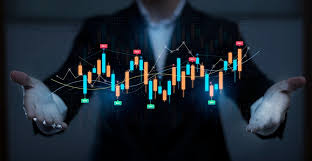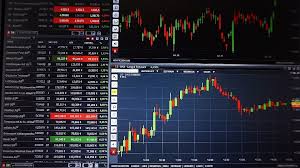
Automated forex trading has revolutionized the way traders engage with financial markets. By leveraging sophisticated algorithms and advanced software tools, traders can now implement strategies that were once too complex or time-consuming to execute manually. In this article, we will delve into the intricacies of automated trading, its advantages, and the steps required to embark on your forex trading journey, including the automated forex trading Turkey Brokers that facilitate this modern trading method.
What is Automated Forex Trading?
Automated forex trading refers to the use of software programs that execute trades in the forex market based on pre-defined trading strategies. These strategies can be based on technical analysis, price patterns, or statistical probabilities. A trading algorithm determines when to enter or exit positions based on parameters set by the trader, effectively removing the emotional aspect from trading decisions.
The Advantages of Automated Trading
1. **Emotion-free Trading**: One of the primary benefits of automated trading is the elimination of emotional decision-making. Traders are often swayed by fear or greed, leading to poor decisions. Automated systems execute trades based strictly on data.
2. **Backtesting**: Automated trading systems allow traders to backtest their strategies using historical data. This means traders can assess how well a strategy would have performed in the past before risking real capital.
3. **Speed and Precision**: Automation eliminates delays in executing trades. Algorithms can analyze market conditions and place trades in a fraction of a second, providing an edge in fast-moving markets.
4. **Diversification**: Traders can monitor and analyze multiple currency pairs simultaneously with automated systems, allowing for better diversification of their trading portfolio.
How Automated Forex Trading Works
Automated forex trading systems typically consist of three core components: a trading strategy, trading software, and a broker account.
1. **Trading Strategy**: Every automated trading system is based on a trading strategy that defines the conditions for entering and exiting trades. This may involve indicators such as Moving Averages, Relative Strength Index (RSI), or custom algorithms. Traders need to develop or choose a strategy that aligns with their trading goals and risk tolerance.
2. **Trading Software**: The software implements the trading strategy and executes trades in real-time. Many platforms, such as MetaTrader 4 (MT4) or MetaTrader 5 (MT5), support automated trading through the use of Expert Advisors (EAs). They provide the ability to programming custom trading algorithms or purchase pre-made systems.
3. **Broker Account**: To trade in the forex market, you need an account with a forex broker. It is essential to choose a reputable broker that offers automated trading capabilities, competitive spreads, and reliable execution. Many brokers now provide API access, which allows traders to connect their automated systems directly to their trading accounts.

Steps to Get Started with Automated Trading
If you are interested in diving into the world of automated forex trading, here are some essential steps to consider:
1. **Educate Yourself**: Before starting, it’s vital to have a solid understanding of forex trading principles, trading strategies, and risk management. Resources like online courses, webinars, and trading forums can help.
2. **Select a Trading Strategy**: Identify a trading strategy that suits your trading style. You can choose from various methods, such as trend-following, scalping, or news-based trading. Make sure to thoroughly backtest any strategies you wish to automate.
3. **Choose a Trading Platform**: Select a trading platform that supports automated trading. Ensure that the platform is user-friendly and offers the necessary features for algorithmic trading.
4. **Implement and Backtest Your Strategy**: Once you’ve chosen a platform and developed your strategy, implement it using a demo account. Backtest your system with historical data to ensure it performs as expected.
5. **Go Live**: After thorough testing and confidence in your strategy, you can start trading with real money. Begin with smaller amounts to minimize risk until you feel comfortable.
Challenges of Automated Forex Trading
While there are many benefits to automated trading, there are also some challenges and risks to consider:
1. **Market Changes**: The forex market is constantly evolving, and what worked in the past may not work in the future. Traders need to continuously optimize their strategies and be adapted to changing market conditions.
2. **Technical Issues**: Automated systems rely on technology. Software glitches or connectivity issues can lead to unexpected outcomes. It is crucial to monitor your trading systems regularly and have contingency plans in place.
3. **Over-optimization**: Traders might fall into the trap of “curve fitting,” where a strategy is overly optimized for historical data, resulting in poor performance in real-time trading environments.
Conclusion
Automated forex trading offers an exciting opportunity for traders to leverage technology and improve their trading outcomes. By understanding the fundamentals, implementing robust strategies, and selecting a reliable broker, traders can tap into the potential of this innovative approach to trading. Whether you’re a seasoned trader or just starting out, automated trading is a tool that can elevate your trading journey and open new avenues for profit. As you explore this dynamic field, always remember the importance of continuous education, testing, and adaptation.
